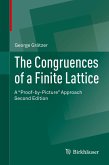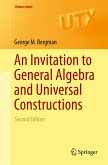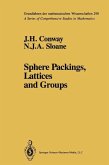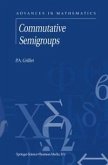This book addresses Birkhoff and Mal'cev's problem of describing subquasivariety lattices. The text begins by developing the basics of atomic theories and implicational theories in languages that may, or may not, contain equality. Subquasivariety lattices are represented as lattices of closed algebraic subsets of a lattice with operators, which yields new restrictions on the equaclosure operator. As an application of this new approach, it is shown that completely distributive lattices with a dually compact least element are subquasivariety lattices. The book contains many examples to illustrate these principles, as well as open problems. Ultimately this new approach gives readers a set of tools to investigate classes of lattices that can be represented as subquasivariety lattices.
Dieser Download kann aus rechtlichen Gründen nur mit Rechnungsadresse in A, B, BG, CY, CZ, D, DK, EW, E, FIN, F, GR, HR, H, IRL, I, LT, L, LR, M, NL, PL, P, R, S, SLO, SK ausgeliefert werden.









